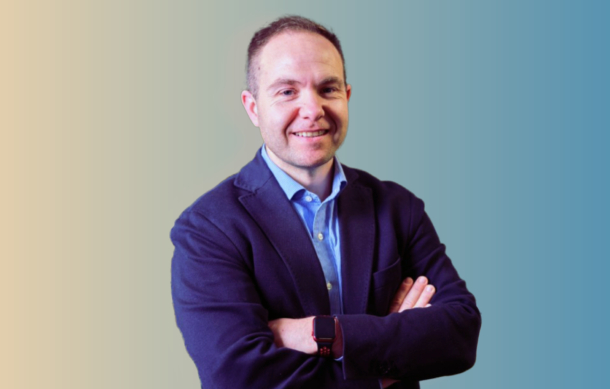Clinical trials of the past struggled with patient enrolment and cost efficiency. What can the pharmaceutical industry learn from the pandemic to create better ways of working?
Interview with Lars Rosendal (Vice President, Global Clinical Operations, LEO Pharma), and Lorena Kuri (Head, Diversity Strategy, Bristol-Myers Squibb)
Where have shortfalls historically existed in clinical trials that could undermine trust between patients and the pharmaceutical industry?
Rosendal: It is a historic question but it is also relevant today. There were a lot of shortfalls and mistakes when regulation was limited, which hugely impacted trust. A lot of regulation has happened since but even in the last 20 years it has been very much a one-way street. Patients were delivering data, but they were not receiving much feedback. The commercial interest of drug development will always be lingering in the periphery, but I think transparency can help us ensure that there is as little bias and threat to the trust between pharma and patients as possible.
Kuri: A shortfall that exists is that clinical trials do not reflect the populations impacted by the diseases that the medicines are intended to treat. People from Black, Hispanic, Asian, and other ethnic minority groups or backgrounds are significantly underrepresented in clinical research in the US. There are multiple barriers to clinical trial participation that we must comprehensively address, starting with education and awareness, trust in the clinical investigator staff and participation, accessibility of sites, proficient language communication, and socioeconomic factors.
The adoption of digital tools has dramatically increased during the COVID-19 pandemic. How have virtual clinical trials impacted recruitment and retention?
Rosendal: We are a hugely conservative industry for good but also for bad reasons. The industry spends a lot of money on clinical research. If you have a path that works, you are hesitant to collect your data in a new way. The pandemic pushed us to think anew.
At LEO Pharma, we quickly established remote management via telemedicine and organised direct-to-patients Investigational Medicinal Product (IMP) shipments to continue their participation in the trials. We also communicated, through the sites, with patients about what was happening and how we saw the drug interacting with their diseases. There is a lot of talk about decentralised clinical trials but there are still not many companies doing them.
For LEO Pharma, we expect that decentralised elements will become a standard element of our trial design in the future. The health authorities and regulators need to come on this journey with the industry to make clinical trials what they potentially could be. The pandemic has shown that we need change if we want more cost-efficient trials that do not impact quality.
Kuri: The COVID-19 pandemic has put a magnifying glass to the disparities that have long existed in healthcare, especially for those from historically excluded minority communities. We have added clinical trial efficiency changes likely to outlast the pandemic.
One such efficiency is providing remote check-in options for patients via telemedicine, which streamlined trials while adding significant convenience for trial participants. Another is facilitating direct-to-patient shipping for some medications.
We are building the drivers for change by centring strategy around the patient experience; taking a thoughtful approach with clear, measurable actions to help medically underserved communities.
Diversity in clinical trials has a direct impact on health outcomes. What further steps can pharma take to improve fair representation of patient populations?
Rosendal: We are very enthusiastic about the decentralised clinical trials methodology and what it could do for patients and the industry. It is only if we have patients with comorbidities in trials that we can safely say that we understand the risk-benefit profile of the compound in the broader real-world patient population. It is about broadening the inclusion criteria; not only conducting trials in the big city centres but also going to rural areas. We need to create one-stop shops because some of the protocols are very complex and require multiple site visits and that prevents people from being able to participate.
At a leadership level, we need to ask ourselves ‘would you be able and willing to participate in this trial yourself?’ and quite often the answer is no. I personally think that decentralised clinical trials are an option for us to deliver on our diversity promise and understand the effects of our compounds in more real-world patient populations.
Kuri: We must all think about diversity by design that results in sustainable, measurable actions. We have committed to identifying and activating underutilised sites in the most racially and ethnically diverse areas of the US.
We will also locate 25% of new clinical trials in highly diverse communities by 2022. Our foundation is training and developing 250 new racially and ethnically diverse clinical investigators through a clinical trial infrastructure and workforce development programme.
We are also supporting the transition from research naïve to fully functional clinical trial sites. Complex issues require action and long-term commitment of industry leaders who are willing to learn and improve. We are confident that by breaking down barriers to clinical trial participation and building drivers for change, we will affect real change.
Looking forward, how would you characterise your vision for the future of clinical trials?
Rosendal: When I look at drug development, it is expensive and it keeps spiraling up because we are increasing the requirements for clinical trials. If we allow clinical development to absorb more and more costs, we will see the prices of drugs going up. We must think about how we can run clinical trials more efficiently. If we were to run them in a more digital way, we could attract and recruit more patients, and it would be easier for physicians to participate, thereby increasing the quality of the data that we collect. To close the circle, we should improve participation satisfaction by interacting more with patients in terms of feeding their individual data back to them during trial conduct, thus further engaging them in our trials. One digital endpoint barrier (at least in dermatology) that exists currently is health authorities; at some point, we need to team up with regulators to say ‘can we make a reproducible end-point product approvable by the authorities that has at least the quality of a face-to-face visit’, and I think that is very feasible with artificial intelligence and automation.
Kuri: We have a responsibility and role to help address health inequities and build drivers for change. This is not just a moral imperative but also a scientific one. We understand that there is no one-size-fits-all solution; we must employ a combination of adaptable, tactical approaches with continuous reflection and modification to make progress against our goals.
We are accelerating efforts to reach diverse at-risk patients with disease awareness and education programmes and information about our patient support programmes, including programmes for people who cannot afford their medicines. There is much work to be done and our partners are critical to this journey. Diversity in clinical trials is a complex issue facing the broader industry, requiring us to continuously leverage progress made through collaboration and deliberate action.









